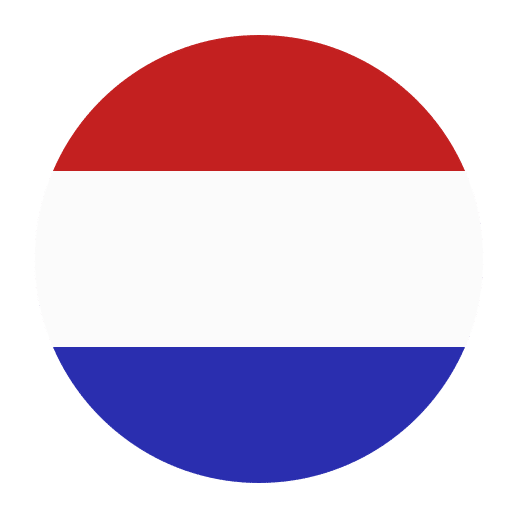Learning a new language can be both an exciting and challenging journey. If you’re looking to learn Dutch, one of the most effective and enjoyable methods is through children’s books. These books are designed to be simple yet engaging, making them an excellent resource for language learners of all ages. In this article, we’ll explore why children’s books are a valuable tool for learning Dutch, how to choose the right books, and provide some recommendations to get you started.
Why Children’s Books?
Learning a new language often starts with the basics—vocabulary, grammar, and sentence structure. Children’s books are specifically crafted to introduce these elements in a natural and accessible way. Here are a few reasons why they are so effective:
1. Simple Language
Children’s books are written using simple, straightforward language that is easy to understand. This makes them perfect for beginners who are just getting acquainted with the Dutch language. The sentences are short, the vocabulary is basic, and the context is usually clear, which helps in grasping the meaning without much effort.
2. Repetition
Repetition is a key element in children’s books. Important words and phrases are often repeated throughout the story, which reinforces learning and helps with memorization. This repetition also aids in understanding sentence structure and grammar rules.
3. Visual Context
Illustrations play a significant role in children’s books. They provide visual context that helps you understand the story and the meaning of new words. This visual aid can be particularly helpful for visual learners who need to see something to remember it.
4. Cultural Insights
Children’s books often contain cultural elements that can give you insights into Dutch customs, traditions, and values. Understanding these cultural nuances can enrich your language learning experience and make it more enjoyable.
5. Fun and Engaging
Learning through stories can be much more engaging than traditional language learning methods. When you are engrossed in a story, you are more likely to remember the words and phrases you encounter. This makes the learning process feel less like a chore and more like an adventure.
Choosing the Right Books
Not all children’s books are created equal, and some may be more suitable for language learning than others. Here are some tips to help you choose the right books:
1. Age Appropriateness
Choose books that are appropriate for the age level you are comfortable with. For beginners, books aimed at very young children (ages 2-5) may be the best starting point. As you progress, you can move on to books for older children (ages 6-9) and eventually to young adult books.
2. Vocabulary
Look for books that introduce a variety of vocabulary words. Picture books with labeled illustrations can be particularly useful for learning new words. Books that include a glossary or a list of vocabulary words at the end can also be helpful.
3. Themes and Interests
Choose books that align with your interests. If you enjoy stories about animals, find books with animal characters. If you like fairy tales, there are plenty of Dutch fairy tales to explore. When you are interested in the subject matter, you are more likely to stay engaged and motivated.
4. Bilingual Books
Bilingual books, which include both Dutch and English text, can be a great resource. They allow you to read the story in Dutch while having the English translation available for reference. This can help you understand the meaning of the text and learn new words and phrases.
5. Recommendations
Seek out recommendations from other language learners, teachers, or online communities. There are many blogs, forums, and social media groups dedicated to language learning where you can find suggestions for good children’s books in Dutch.
Recommended Books
To help you get started, here are some recommended Dutch children’s books that are popular among language learners:
1. “Nijntje” (Miffy) by Dick Bruna
The “Nijntje” series is one of the most famous Dutch children’s book series. The stories are simple, the illustrations are clear, and the text is easy to understand. The repetitive nature of the stories makes them perfect for beginners.
2. “Jip en Janneke” by Annie M.G. Schmidt
“Jip en Janneke” are beloved characters in Dutch literature. The stories are about the everyday adventures of two young children. The language is simple, and the stories are short, making them ideal for language learners.
3. “Dikkie Dik” by Jet Boeke
“Dikkie Dik” is a series about a mischievous orange cat. The books are designed for very young children and feature simple text and engaging illustrations. They are great for building basic vocabulary.
4. “Pluk van de Petteflet” by Annie M.G. Schmidt
Another classic by Annie M.G. Schmidt, “Pluk van de Petteflet” is a longer book suitable for intermediate learners. It tells the story of Pluk, a young boy who lives in a tower and has various adventures. The language is still accessible, but the book offers a bit more challenge.
5. “Rupsje Nooitgenoeg” (The Very Hungry Caterpillar) by Eric Carle
The Dutch version of “The Very Hungry Caterpillar” is a wonderful book for beginners. The story is simple and repetitive, and the illustrations provide clear context for the text. It’s a great book for learning numbers, days of the week, and basic food vocabulary.
6. “Kikker” (Frog) series by Max Velthuijs
The “Kikker” series features stories about a frog and his friends. The language is simple, and the stories often contain moral lessons. The illustrations are charming, and the text is easy to follow.
How to Use Children’s Books for Learning
Once you have selected your books, it’s essential to use them effectively to maximize your learning. Here are some strategies to help you get the most out of reading children’s books in Dutch:
1. Read Aloud
Reading aloud helps improve your pronunciation and fluency. It also reinforces the connection between the written and spoken word. Try to mimic the sounds and intonation of native Dutch speakers as closely as possible.
2. Repeat
Repetition is crucial in language learning. Read the same book multiple times to reinforce vocabulary and sentence structures. Each time you read, you will likely understand more and catch details you missed before.
3. Use Visual Clues
Pay close attention to the illustrations. They can provide valuable context that helps you understand the story and the meaning of new words. Try to describe the pictures in Dutch as you read.
4. Make Notes
Keep a notebook handy to jot down new words and phrases. Write down their meanings and try to use them in sentences. Reviewing your notes regularly will help reinforce your learning.
5. Practice with Audio
If the book is available in an audio format, listen to it while following along with the text. This will help you improve your listening skills and get used to the rhythm and pronunciation of Dutch.
6. Discuss the Story
If possible, discuss the story with a native Dutch speaker or a fellow learner. Talking about the book will help reinforce your understanding and give you an opportunity to practice speaking.
7. Translate
Try translating short passages from Dutch to English and vice versa. This exercise will help you understand the structure of the language and improve your translation skills.
8. Use Online Resources
There are many online resources available that can complement your reading. Websites and apps like Duolingo, Memrise, and Anki can help you build vocabulary and practice grammar. Online dictionaries and language forums can also be useful for looking up words and asking questions.
Additional Tips for Success
Learning a language is a long-term commitment that requires patience and consistency. Here are some additional tips to help you succeed:
1. Set Goals
Set specific, achievable goals for your language learning. For example, aim to read one children’s book per week or learn a certain number of new words each day. Having clear goals will keep you motivated and focused.
2. Create a Routine
Establish a regular study routine. Consistency is key to language learning. Dedicate a specific time each day to read and practice Dutch. Even 15-20 minutes a day can make a significant difference over time.
3. Immerse Yourself
Immerse yourself in the language as much as possible. Listen to Dutch music, watch Dutch movies and TV shows, and try to use Dutch in your daily life. The more you expose yourself to the language, the faster you will learn.
4. Be Patient
Language learning is a gradual process, and it’s normal to experience ups and downs. Be patient with yourself and celebrate your progress, no matter how small. Remember that every step forward is a step closer to fluency.
5. Seek Support
Join language learning communities, both online and offline. Connecting with other learners can provide support, encouragement, and additional learning opportunities. You can share resources, ask for advice, and practice speaking with others who are on the same journey.
Conclusion
Learning Dutch through children’s books is an enjoyable and effective way to build your language skills. The simple language, repetition, visual context, and engaging stories make them an ideal resource for beginners. By choosing the right books and using them effectively, you can make significant progress in your language learning journey. Remember to set goals, create a routine, immerse yourself in the language, be patient, and seek support. With dedication and consistent effort, you’ll be well on your way to mastering Dutch. Happy reading!

